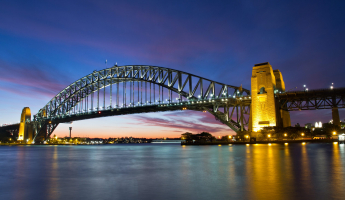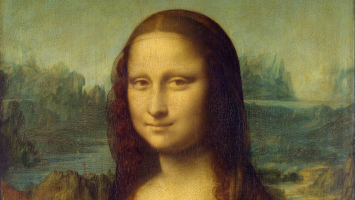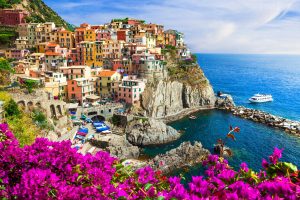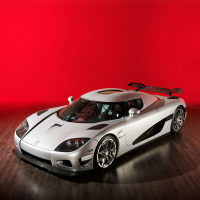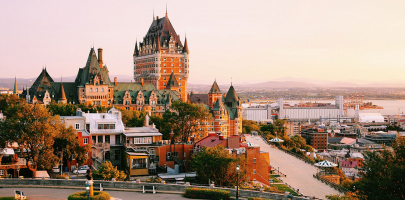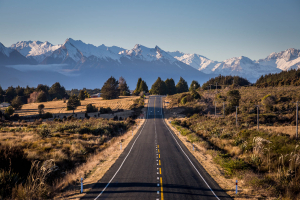Top 15 Most Famous Domes In The World
A dome is a hemispherical structure that often serves as a roof or ceiling. Several distinct cultures have employed dome constructions constructed of different ... read more...materials throughout history. In the ancient Near East, substantial mounds were used to create domes as tombs. Igloos were built by the Inuit in the Arctic using blocks of compacted snow, usually in the shape of a dome. With the invention of the massive masonry hemispheres by the ancient Romans, domes gained technological significance. Dome structures are works of exquisite beauty and ingenuity, from Buckminster Fuller's geodesic skyscrapers to African beehive homes. And, here are the most famous domes in the world.
-
One of the most significant architecturally and symbolically in the country is the United States Capitol. The legislative arm of the United States federal government, officially known as the United States Congress, is housed at the United States Capitol, sometimes known as The Capitol or the Capitol Building. At the eastern end of the National Mall in Washington, D.C., it is situated on Capitol Hill. The Capitol still serves as the starting point for the area's street addressing system and its four quadrants even though it is no longer physically located in the center of the federal district.
The current structure's central portions were finished around 1800. In the five years following the Burning of Washington in 1814, they were completely repaired. The bicameral legislature's chambers, the House of Representatives in the south wing and the Senate in the north wing, were later added to, enlarging the structure. The enormous dome was finished about 1866, immediately following the American Civil War. The Capitol is constructed in the neoclassical style and has a white façade, just as the main buildings of the executive and judicial branches. Although it has fronts on both its east and west elevations, only the east front was designed to host guests and dignitaries.
Location: Washington, D.C

ihitthebutton.com 
lptv.org -
The Dome of the Rock is an Islamic shrine that can be seen on the Temple Mount in Jerusalem's Old City. Muslims often refer to this location as the Al-Aqsa Compound or al-Haram al-Sharif. It was first erected on top of the location of the Second Jewish Temple (built in around 516 BCE to replace the demolished Solomon's Temple), which was destroyed by the Romans in 70 CE, by the Umayyad Caliphate on Abd al-orders Malik's during the Second Fitna in 691-692 CE. After collapsing in 1015, the old dome was restored in 1022–1023. The Dome of the Rock is the earliest surviving example of Islamic design in existence.
Although its exterior was extensively altered throughout the Ottoman time and again in the contemporary period, most notably with the addition of the gold-plated roof, in 1959–1961, and again in 1993, its architecture and mosaics were inspired by surrounding Byzantine churches and palaces. The Church of the Seat of Mary, also known as Kathisma in Greek and al-Qadismu in Arabic, which was constructed between 451 and 458 on the route between Jerusalem and Bethlehem, may have had an impact on the building's octagonal design.
As the spot where God created the world and the first person, Adam, the Foundation Stone (or Noble Rock) that the temple was constructed atop has immense significance in the Abrahamic religions. Jews look toward it during prayer because it is also said to be the location of Abraham's failed effort to sacrifice his son and the area where God's presence is most clearly felt than anywhere else. Muslims view this location as having tremendous significance because of legends linking it to the world's creation and the notion that Muhammad's Night Journey started from the rock at the center of the building.
Location: Old City of Jerusalem, Jerusalem
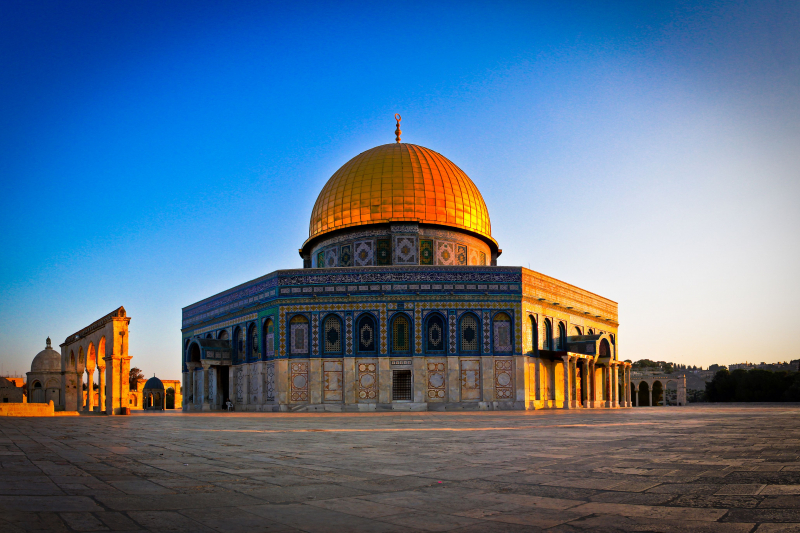
Wallpaper Cave 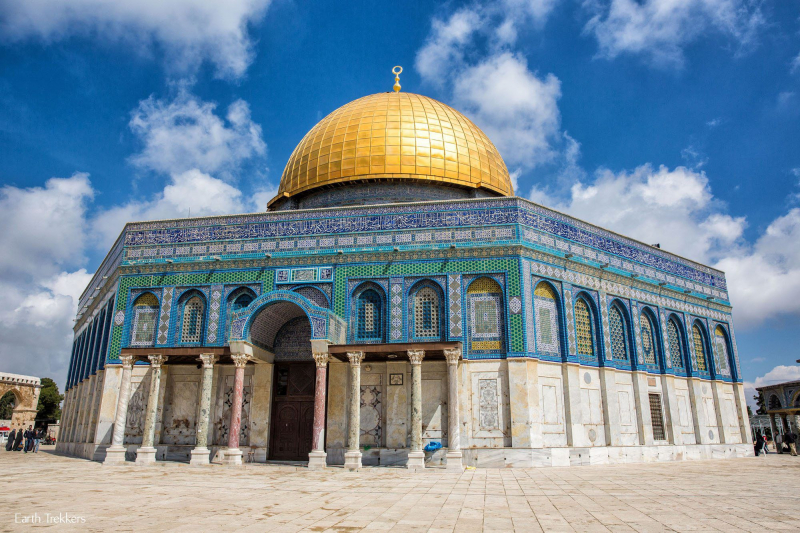
Wallpaper Cave -
The Taj Mahal, a vast monument made of white marble that stands magnificently on the banks of the river Yamuna, is a symbol of love and passion. It dominates as one of India's most recognizable and iconic pictures. Many who have made the journey have stood at its entrance in awe of its magnificence due to its delicate minarets, delicately curved archways, and ice cream scoop domes. On the right bank of the Yamuna River in the Indian city of Agra stands the Islamic ivory-white marble mausoleum known as the Taj Mahal. The Mughal emperor Shah Jahan had it built in 1631 and also used it to house his own tomb. Mumtaz Mahal was Shah Jahan's favorite wife.
The mausoleum is the focal point of a 17-hectare (42 acre) complex that also contains a mosque and a guest house. The complex is surrounded on three sides by a crenellated wall and is located in formal gardens. Although the mausoleum's construction was substantially finished in 1643, other project phases required a further 10 years of effort. The Taj Mahal complex is thought to have been finished in its entirety in 1653 at a cost that was estimated at the time to be over 32 million, or roughly US $1 billion in 2020. A board of architects chaired by Ustad Ahmad Lahauri, the emperor's court architect, oversaw the building project, which employed some 20,000 workers.
In 1983, the Taj Mahal was named a UNESCO World Heritage Site in recognition of its status as "the gem of Muslim art in India and one of the most beloved works of art in human history". Many people believe it to be the finest example of Mughal architecture and a representation of India's long history. Moreover 6 million people visit the Taj Mahal each year, and it was chosen as one of the New 7 Wonders of the World in 2007.
Location: Agra, Uttar Pradesh, India
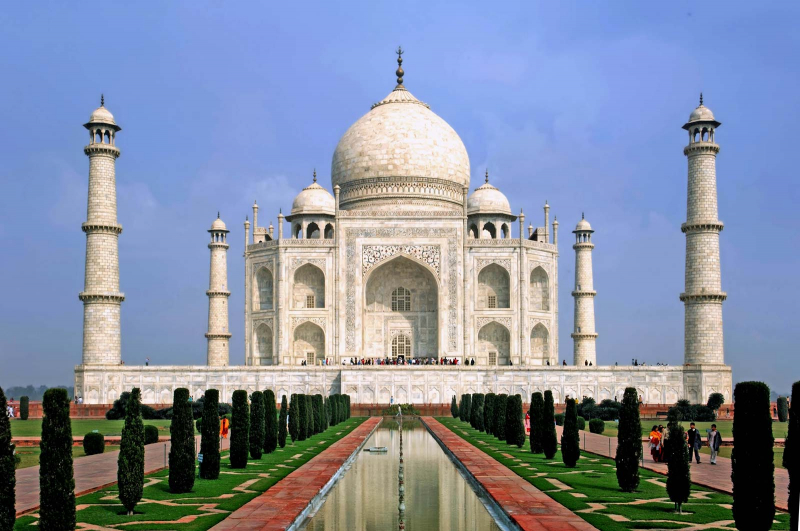
Malaysia Today 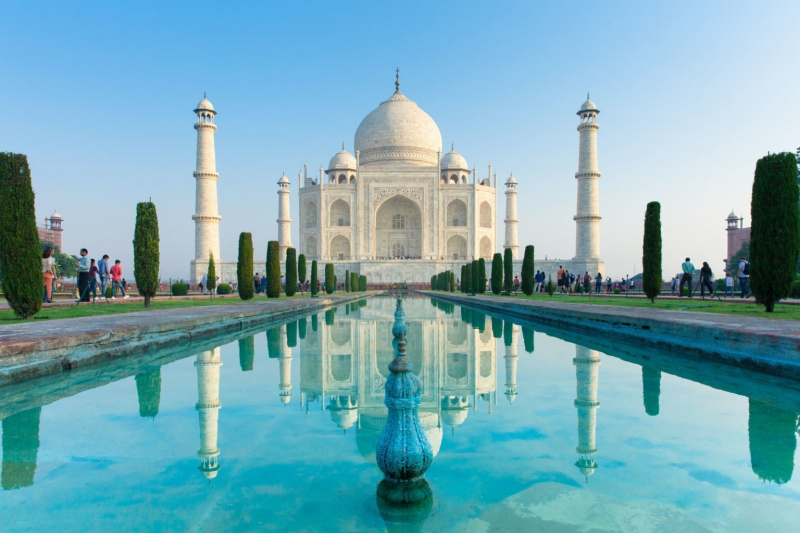
Malaysia Today -
One of the architectural wonders of Safavid Iranian architecture, Sheikh Lotfollah Mosque is located in Isfahan, Iran, on the eastern side of Naghsh-i Jahan Square. This magnificent small mosque's dome is regarded as one of the greatest examples of Islamic architecture in the entire globe. One of the neighborhood's smallest mosques, it was built with the royal family's use in mind.
With the exception of its majestic dome, Sheikh Lotfollah Mosque's appearance may not be as impressive as that of Imam Mosque in Naghsh Jahan Square, but once you go inside, you will be astounded by the mosque's exquisite construction and interior decorations. One of the appealing features of Sheikh Lotfollah Mosque is the tile work near to the dome. Similar to Imam Mosque, Sheikh Lotfollah Mosque's entrance is at a 45-degree angle to the qibla. To address this issue, a passageway has been created that allows you to enter the mosque facing the qibla, with no indication of this deviation visible from the outside.
On the other side, Sheikh Lotfollah Mosque lacks a minaret and a nave, which is unusual in Iranian mosque construction. When you enter the mosque and turn to face the ceiling, you'll be astounded. One of Iran's most exquisite domes is that of the Sheikh Lotfollah Mosque. Any observer will be impressed by the size and ornamentation of this dome, especially as light streams in through the windows, the dance of light and color begins, and the mosque's iconic peacock is created on the inner layer of the dome. The mosque receives all-day sunshine because to the 16 windows that surround the dome.
Location: Isfahan, Iran
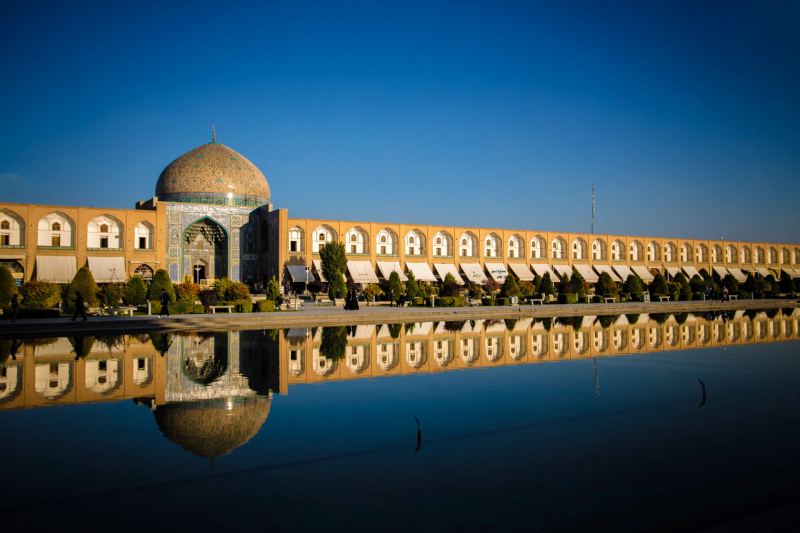
ifpnews.com 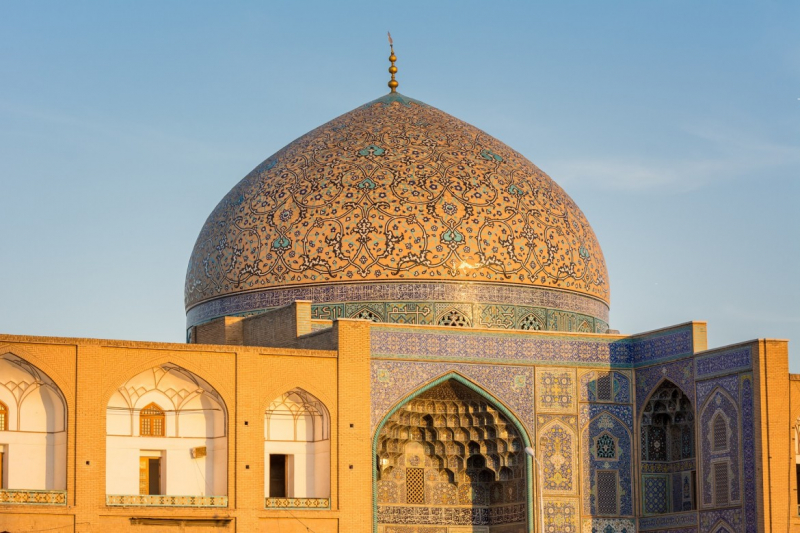
apochi.com -
The Hagia Sophia, a historic Greek Orthodox patriarchal basilica that was the largest cathedral in the world for more than nine centuries until the Turks conquered the city in 1453, is now a museum after being transformed into one in 1935. It was built by Emperor Justinian in 537. The dome is primarily responsible for Hagia Sophia's international fame. The church's nave is dominated by the dome of Hagia Sophia. The dome measures 33 meters (108 feet) in diameter and is made of brick and mortar.
Up until 1931, the building was used as a mosque before becoming off-limits to visitors for four years. The structure, which was reopened in 1935 as a museum under the secular Republic of Turkey, is currently the most popular tourist destination in Turkey. The Council of State revoked the museum's establishment approval in July 2020, and the Hagia Sophia was categorized as a mosque. The Hagia Sophia's waqf, donated by Sultan Mehmed, had designated the location a mosque; proponents of the judgment contended the Hagia Sophia was the sultan's private property, making the 1934 ruling illegal under Ottoman and Turkish law. The Turkish opposition, UNESCO, the World Council of Churches, the International Association of Byzantine Studies, and several other world leaders all denounced this redesignation.
Location: Fatih, Istanbul, Turkey
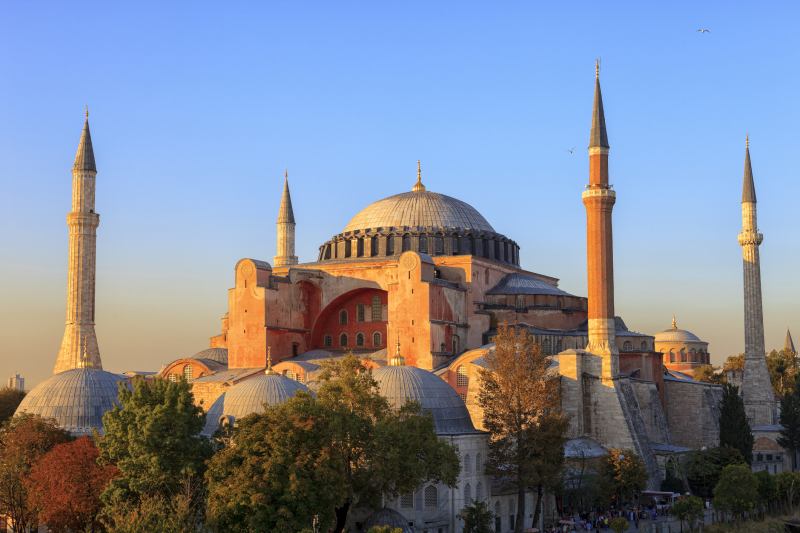
University of California, Davis 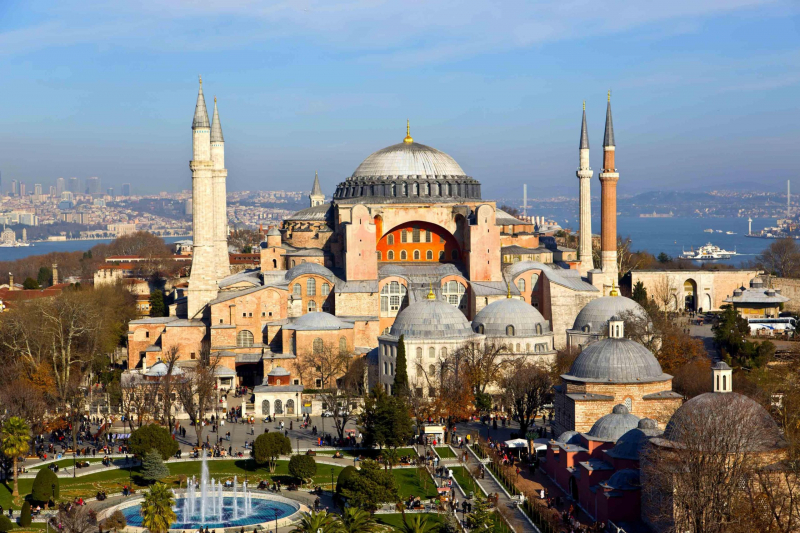
University of California, Davis -
Since Emperor Ashoka constructed the Great Stupa at Sanchi in the third century BC, it has served as the epicenter of the Buddhist religion in the area. The impressive building, which is still a source of awe today, is surrounded by the ruins of smaller stupas, monasteries, and temples that were constructed as the local religious community expanded over the centuries following the site's founding. It is situated at the summit of a hill.
Despite its remarkable size now, the original Ashokan stupa was made using big bricks and mud mortar, and it was only about half as big. It is thought to have had elevated terraces at the base, a wooden railing to encircle it, and a stone umbrella to top it all off. Approximately 50 years after Ashoka's passing, during the Sunga dynasty, the stupa was expanded using local sandstone. Later, in the first century BC, were added the intricately carved doorways.
The stupa's main body represents the cosmic mountain. The triple umbrella, or "chhatraveli", which stands for the three jewels of Buddhism—the Buddha, the Dharma, and the Sangha—is held by a "harmika" on top of the structure. Worshippers can stroll around the stupa on the high, circular platform at the base, which is reached by steps. Another procession path with stone balustrades is located on the ground level. The structure's features are the four cardinal point entrances, which include intricate carvings of Buddhist symbols and significant historical and religious motifs. It's interesting to note that Buddha is always shown in these sculptures as a symbol rather than a person. He appears as a horse without a rider, an umbrella over an empty throne, the Bodhi tree, or footsteps on the doorways.
Location: Sanchi, Madhya Pradesh
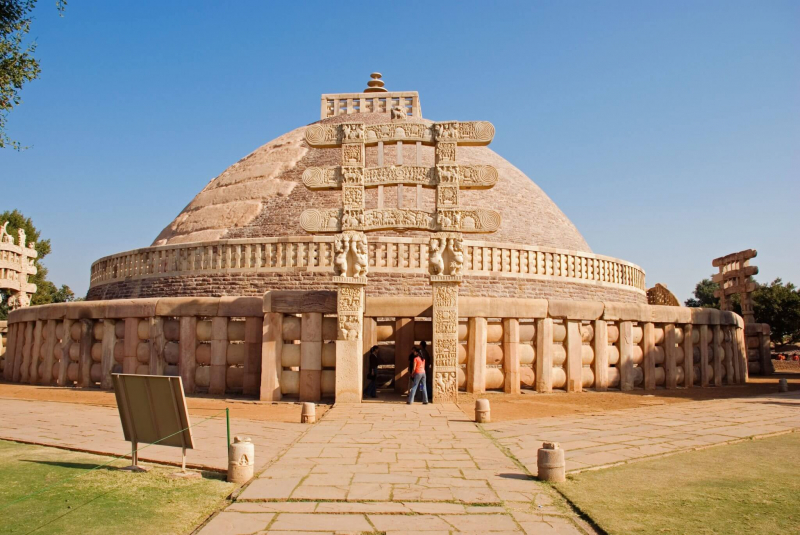
blogspot.com 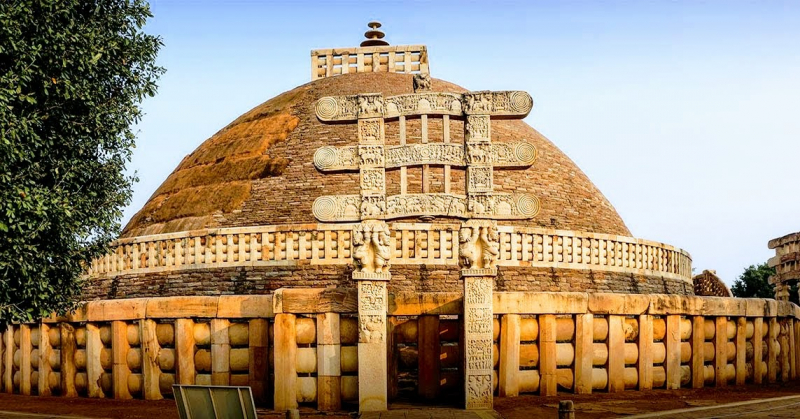
blogspot.com -
The Basilica di Santa Maria del Fiore is not only Florence’s religious center, but also the city’s most recognizable attraction and the world’s largest masonry dome. taking up residence in the center of the city, the Piazza del Duomo. Between the fourth and fifth centuries A.D., a large Gothic cathedral was constructed during the late Roman era. On the site of the previous Roman church, Santa Reparate, Filippo Brunelleschi constructed the beautiful dome, and the renowned artist Giotto contributed to the campanile's design.
The Duomo di Firenze is a cathedral of the Roman Catholic Archdiocese of Florence that was started by the architect Arnolfo di Cambio at the end of the 13th century and finished in 1436 with a colossal Renaissance dome by Filippo Brunelleschi. It is a famous landmark in Florence and one of the most significant buildings in the entire globe. It is also a component of the UNESCO World Heritage Site. The Baptistery of San Giovanni and Giotto's free-standing bell tower (Campanilla), which is his most significant architectural achievement, are both found in the cathedral.
Outside, the aureola around the Madonna in Nanni di Banco's Assumption relief gives rise to the term "Porta della Mandorla", which stands out. The church's interior is split into three naves by substantial pillars. The architectural components start at the base of the pillars and end with the ogival vaults. The size is huge, measuring 153 meters long and 38 meters broad. The interior's simplicity and austerity provide a strong impression of emptiness. In terms of size and construction, the Cathedral of Florence is unique.
Baccio d'Agnolo created the floor in multicolored marble, and his son Giuliano, Francesco da Sangallo, and other artists finished the work from 1526 to 1560. (1520-26). It was found that several marbles from the incomplete façade, which had been destroyed at the time, had been utilized, upside down, in the floor during repair work after the 1966 flood.
Location: Duomo Square, Florence
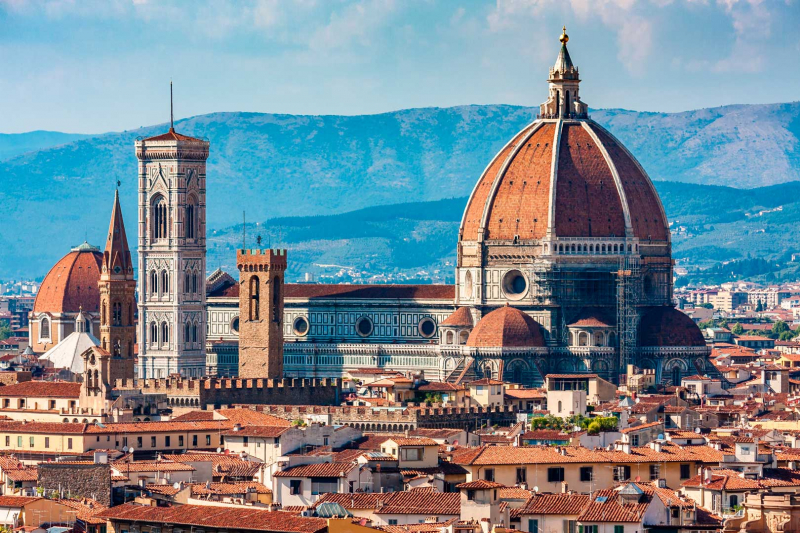
andalezs.blogspot.com 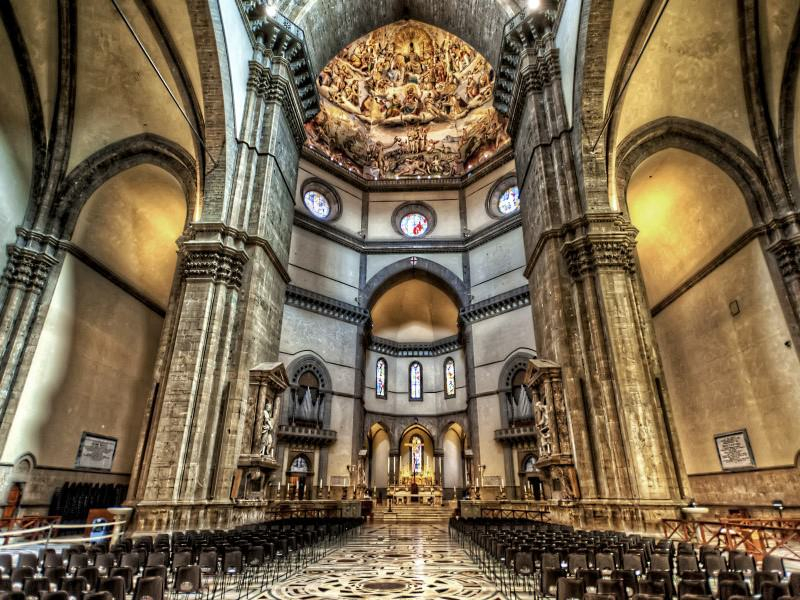
orangesmile.com -
Saint Peter's Basilica, also known as the Papal Basilica of Saint Peter in the Vatican or simply Saint Peter's Basilica, is a Renaissance-style Basilica situated in Vatican City, the papal enclave inside the city of Rome, Italy. Originally intended to replace the ancient Old St. Peter's Basilica, which was constructed in the fourth century by Roman emperor Constantine the Great, it was first envisioned by Pope Nicholas V and then Pope Julius II. The most well-known example of Renaissance architecture, and according to interior measurements, the biggest church in the world, St. Peter's was primarily created by Donato Bramante, Michelangelo, Carlo Maderno, and Gian Lorenzo Bernini. St. Peter's is recognized as one of the most sacred Catholic sites even though it is neither the mother church of the Catholic Church nor the cathedral of the Rome Diocese.
St. Peter's is well-known for its liturgical activities and as a destination for pilgrims. Every year, the pope presides over a number of liturgies in the basilica or the nearby St. Peter's Square, which are attended by anywhere between 15,000 and 80,000 people. The Early Christian Church, the Papacy, the Protestant Reformation, the Catholic Counter-Reformation, and a number of artists, most notably Michelangelo, are just a few of the historical associations that St. Peter's possesses.
It is recognized as the greatest edifice of its day in terms of architecture. St. Peter's is one of the seven pilgrim churches of Rome and one of the four churches in the world with the title of Major papal basilica, all of which are located in Rome. Contrary to what many people believe, it is not a cathedral as the pope's cathedra as the bishop of Rome is located at Saint John Lateran.
Location: Vatican City, Rome
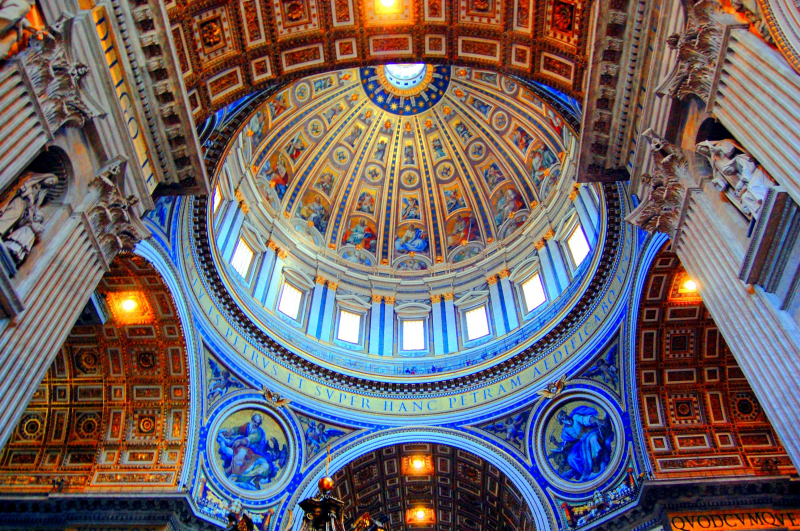
Black Hair 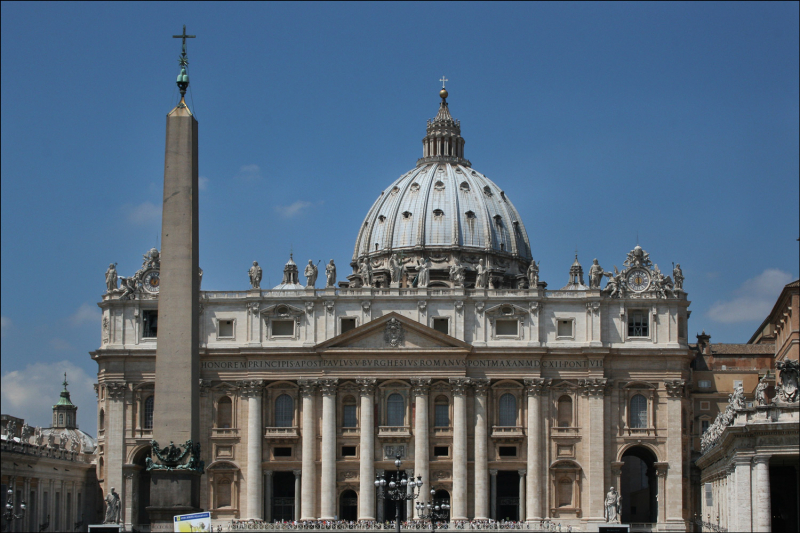
Black Hair -
St Paul’s is an architectural masterpiece and its dome a landmark of the London skyline. The Bishop of London is housed in St Paul's Church, an Anglican cathedral in London. The mother church of the London Diocese is the cathedral. It is a Grade I listed building that is located atop Ludgate Hill, the highest point in the City of London. The earliest church that was built here in AD 604 was dedicated to the apostle Paul. Sir Christopher Wren created the current building, which is a late 17th-century example of English Baroque architecture. Its construction, which was finished during Wren's lifetime, was a crucial aspect of the city's extensive reconstruction effort following the Great Fire of London.
One of London's most well-known and recognizable landmarks is the cathedral. For more than three centuries, its dome has dominated the skyline, encircled by the spires of Wren's City churches. From 1710 to 1963, it held the record for tallest structure in London at 365 feet (111 meters). The dome remains among the tallest in the entire globe. After Liverpool Cathedral, St. Paul's is the second-largest church structure in terms of square footage in the United Kingdom.
Many promotional materials include St. Paul's Cathedral as their main picture, along with shots of the dome enveloped in the Blitz's smoke and flames. The cathedral is a functioning church with daily services and hourly prayer. Adult admission for tourists is £21 at the door (£15 if purchased online for the summer of 2022), however there are no fees for worshipers who attend services that have been publicized.
Location: London, United Kingdom
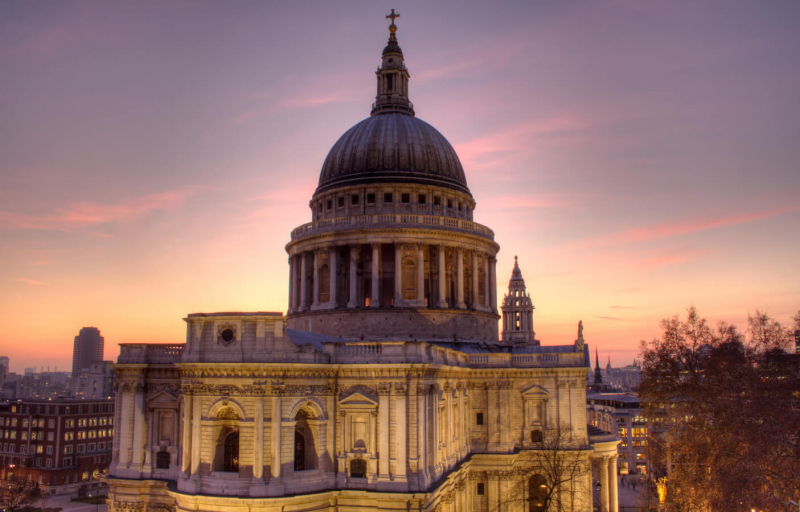
dreamhouseapartments.com 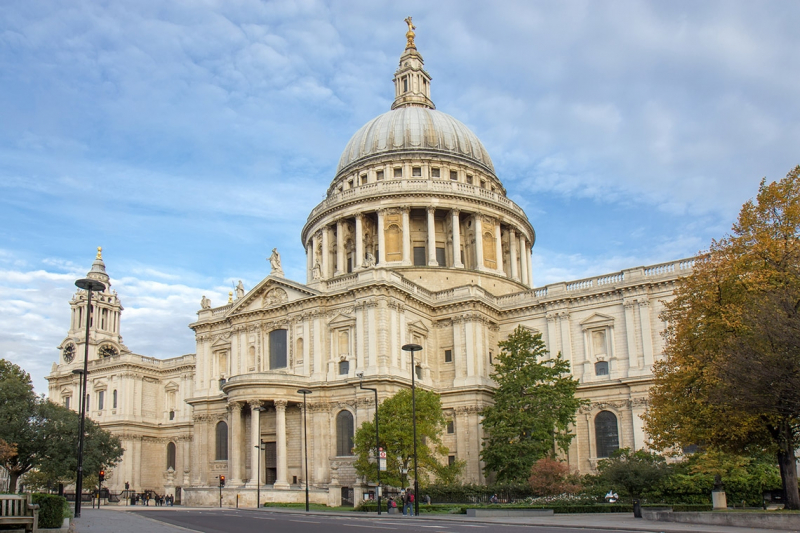
londonperfect.com -
From 1933 until 1945, the Reichstag, formally known as the Großdeutscher Reichstag (or "Greater-German Reichstag"), served as Nazi Germany's parliament. It acted as a rubber stamp parliament in essence. It was primarily intended to serve as a rubber stamp for the decisions made by Adolf Hitler's dictatorship — always by unanimous approval — and to hear Hitler's speeches after the Nazi takeover of power and the passing of the Enabling Act of 1933. The Reichstag only met 20 times in this strictly ceremonial capacity, with the final meeting being on April 26, 1942. Hermann Göring presided over the Reichstag at this time.
Due to the frequent singing of the national anthem during sessions, the Reichstag was at times mockingly referred to by the German people as the "teuerste Gesangsverein Deutschlands" (the costliest singing club in Germany). Hitler extended the tenure of the existing Reichstag (elected in late 1938 to serve in 1939–1943) to serve an extraordinary eight-year term to finish on January 30, 1947, in 1943 in order to avoid conducting regular elections during World War II.
The environmental sculptors Christo and Jeanne-Claude covered the structure in more than one million square feet (more than 90,000 square meters) of silver cloth in June 1995, turning it into the center of attention for the art world. The installation, which was considered one of Christo and Jeanne-most Claude's ambitious works, was seen by more than five million people.
Location: Berlin, Germany
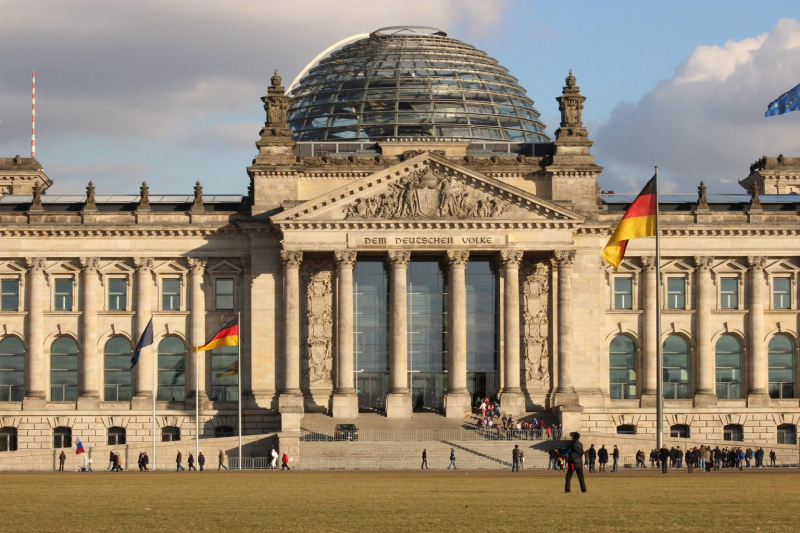
thepienews.com 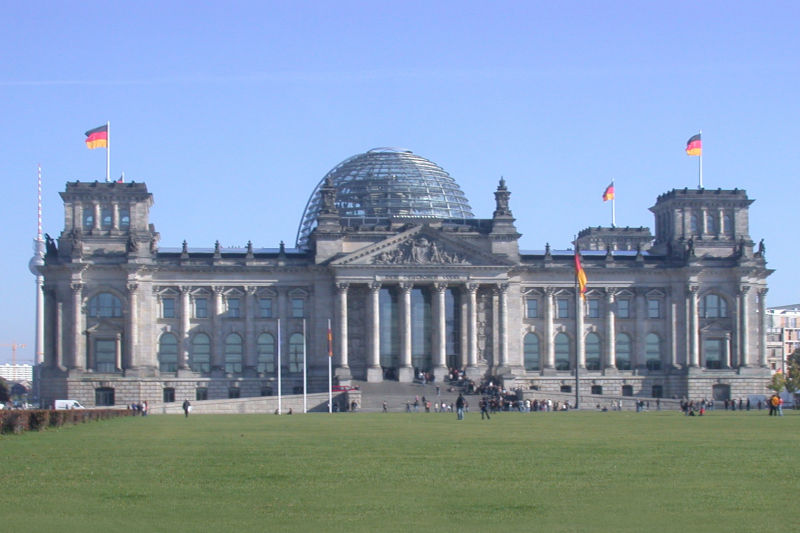
thepienews.com -
In Isfahan, Iran, there is a mosque called the Shah Mosque. On the southern side of Naghsh-e Jahan Square, it is situated. Shah Abbas I of Persia gave the order for its construction to take place during the Safavid era. It is recognized as one of the pinnacles of Islamic-era Persian architecture. Together with Naghsh-e Jahan Square, the Royal Mosque is listed as a UNESCO World Heritage Site. Its splendor is primarily a result of the elegance of its seven-color mosaic tiles and calligraphic inscriptions and building on it started in 1611. The mosque is shown on the back of the Iranian banknote worth 20,000 rials. In 2022, damage was discovered.
The entry portico draws visitors' attention with its beauty just before they enter the mosque. The ornamental muqarnas vaulting in the Iwan entryway primarily serves as a metaphor for God creating the cosmos. Additionally, it will gently transition the guests into the dome ceiling. In addition, two majestic 42 m-tall minarets with wooden balconies on top rise to the sides of the main gate.
It goes without saying that building the mosque has been extremely difficult. Mosques must be aligned towards Mecca in order to be built according to Islamic design. However, Shah Mosque's designers had to work harder to attain the essential alignment. So, when guests enter the building through the entrance portal, they will notice a subtle shift to the right along a curved hallway that leads to a sizable courtyard that is bordered by intriguing two-story arcades. The Sangab is located in the hallway. Originally, the purpose of this beautiful stone water trough was to serve as a water source for the guests.
Location: Isfahan, Iran
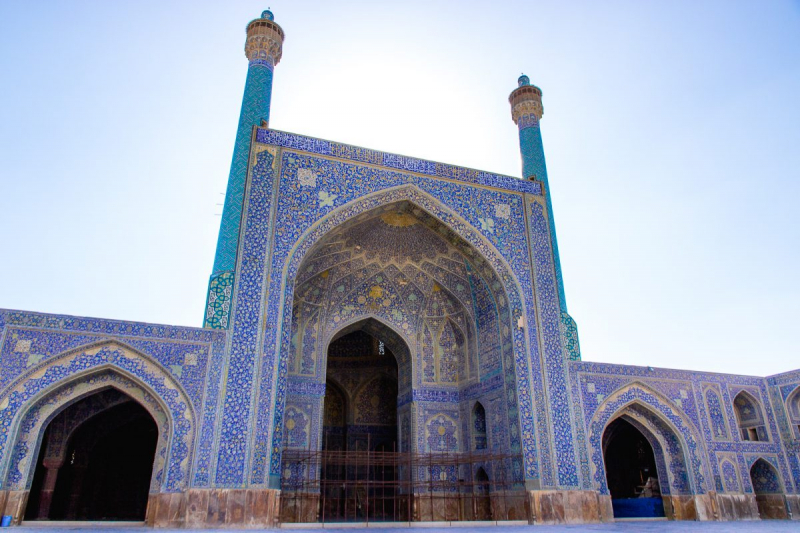
omnivagant.com 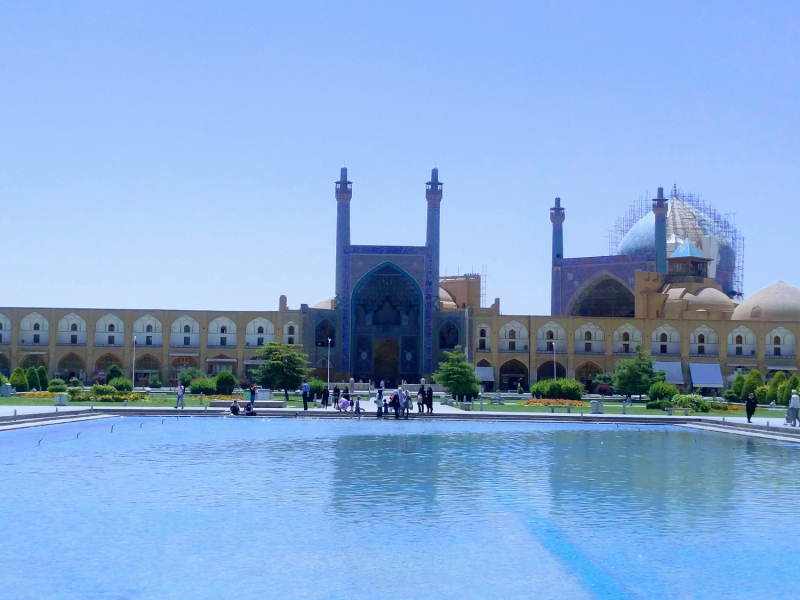
beenaroundtheglobe.com -
The Gur-e Amir Mausoleum, one of the most important architectural ensembles of the medieval East, was constructed around the beginning of the 15th century in the southwest region of Samarkand, Uzbekistan. The conqueror Timur and maybe a member of his family were laid to rest at the Mausoleum. Stars and white dots adorn the stunning blue dome. Timur (Tamerlane), together with his two sons and two grandchildren, is interred at the Gur-e-Amir Mausoleum, which is distinguished by its stunning doorway and distinctive fluted azure dome (including Ulugbek). It's a rather little structure, in large part because Timur never anticipated being buried here. Remember to come back at night when the building is spotlit to great advantage since the tilework and dome are especially lovely.
The modest crypt that Timur had constructed for himself at Shakhrisabz was replaced with this one in 1404 for Mohammed Sultan, his projected heir who had passed away the year before. However, according to legend, Timur was buried here in Shakhrisabz after he unexpectedly passed away from pneumonia in Kazakhstan in the winter of 1405, while organizing an expedition against the Chinese.
Ulugbek's simple marble monument is to Timur's left, while Mir Said Baraka, one of Timur's spiritual advisers, is to Timur's right. Mohammed Sultan is located in front. The tombs of Shah Rukh, the father of Ulugbek, and Miran Shah are marked by the stones behind Timur. The most respected of Timur's tutors, Sheikh Seyid Umar, who is reputed to be a descendent of the Prophet Mohammed, is hidden underneath them. Timur gave the order to erect Gur-e-Amir around Umar's grave.
Location: Oksaroi, Samarkand
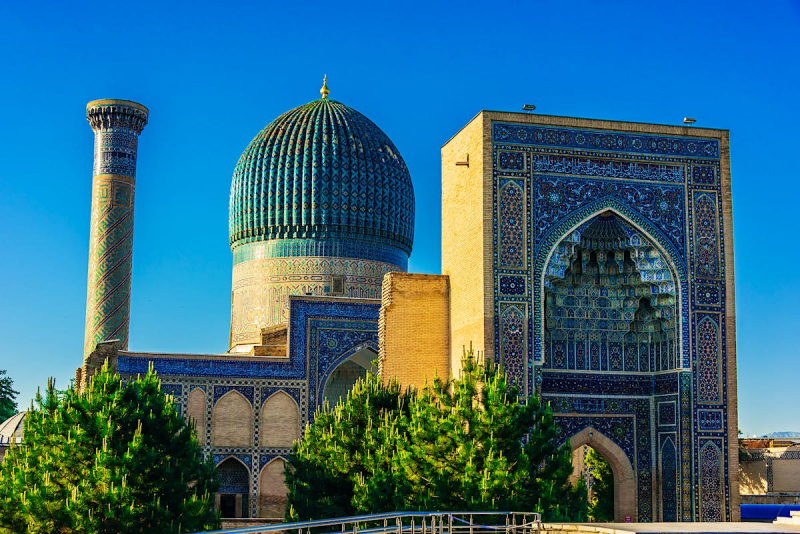
Lonely Planet 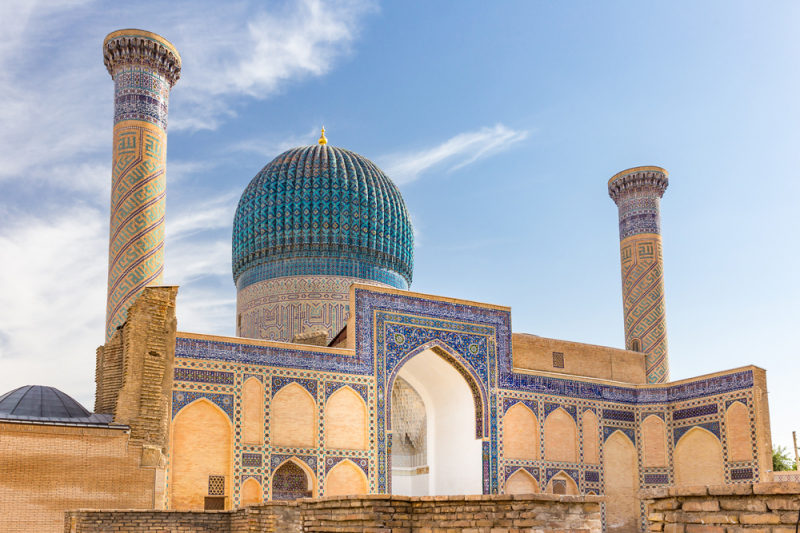
travelhk.com -
The Putra Mosque, also known as the Pink Mosque, is one of the must-see locations on Kuala Lumpur shore excursions and is visible from almost anywhere in Putrajaya. The distinctive pink color that the rose-tinted granites used to cover the mosque gave it its moniker, the Pink Mosque. The first mosque in the world to be painted pink is Malaysia's second-oldest mosque.
The rose-pink beauty of the Putra Mosque does not alone draw hundreds of visitors each year. The mosque, with a 160-meter minaret that can accommodate roughly 18,000 people, is a remarkable synthesis of mosques from all over the world, each with stunning design. Each essential quality is combined into one. The architecture of the mosque was created using masterpieces from throughout the world, with influences from Egypt, Germany, and Baghdad for the stained glass and Morocco and Baghdad for the sculptures. The mosque also exudes the Safavid era's architectural influence from Iran.
Putra Mosque, which was constructed more than 20 years ago, is located in the heart of Kuala Lumpur at the shore of the stunning Putrajaya Lake. The mosque, which bears the name of Malaysia's first prime minister, is not only a popular tourist destination but also a significant place of prayer for the local Muslim population of Putrajaya. Non-Muslims are welcome to visit the location outside of prayer times, despite the fact that its principal function is as a place of worship.
Location: Putrajaya, Indonesia
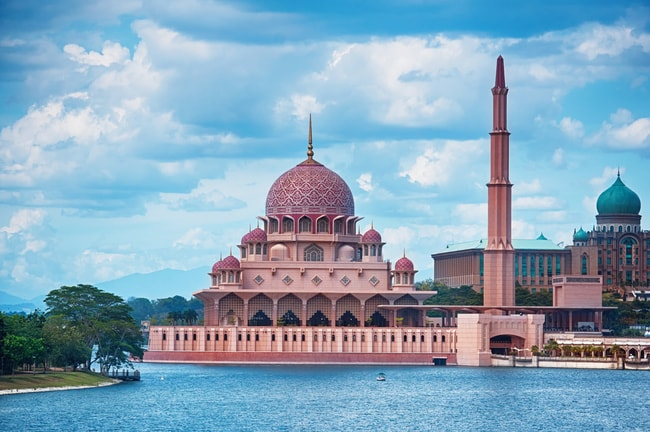
Culture Trip 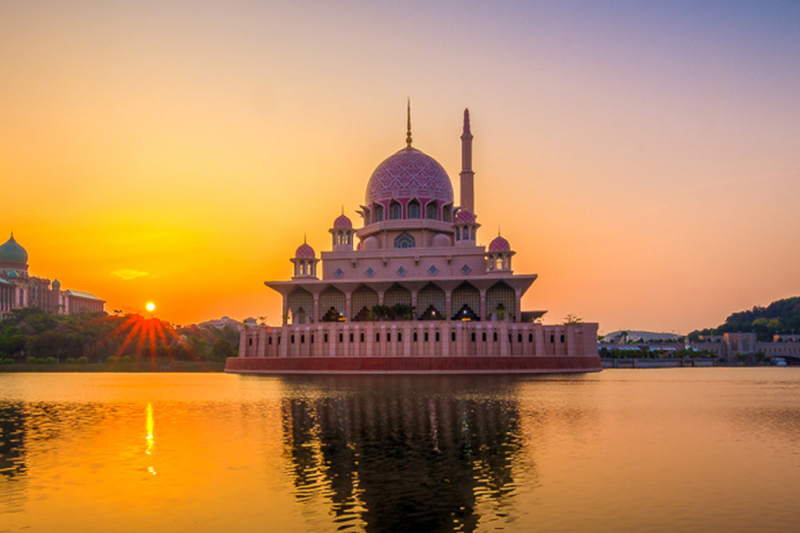
gebpowtravel.com -
The National Assembly of Hungary is housed at the Hungarian Parliament Building, sometimes referred to as the Parliament of Budapest due to its location. It is a well-known landmark in Hungary and a well-liked tourist attraction in Budapest. On the eastern bank of the Danube, in Pest, Kossuth Square is where it is located. Imre Steindl, a Hungarian architect, created the neo-Gothic structure, which debuted in 1902. Since its construction, it has been Hungary's biggest structure.
The Parliament Building features a symmetrical façade, a central dome, and was constructed in the Gothic Revival architectural style. The architecture of the dome is Renaissance Revival. From the inside, the parliament is generally symmetrical, with two similar parliament halls on the opposite sides of the structure. Although the building's official primary entrance is from the plaza on the east side, the building's main façade faces out into the Danube. There are a total of 242 sculptures on the walls both inside and outside. Statues of Transylvanian and Hungarian leaders as well as well-known military figures are shown on the façade.
The hexadecagonal (sixteen-sided) center hall and its two enormous neighboring rooms, the Lower House and the Upper House, are two of the most well-known features of the structure. The Upper House serves as a conference and meeting space while the Lower House serves as the unicameral meeting location for the current National Assembly. Since 2000, the central hall has featured a presentation of the Holy Crown of Hungary, which is also shown on the country's coat of arms. The structure is almost always being renovated because of its wide surface area and intricate craftsmanship.
Location: Budapest, Hungary
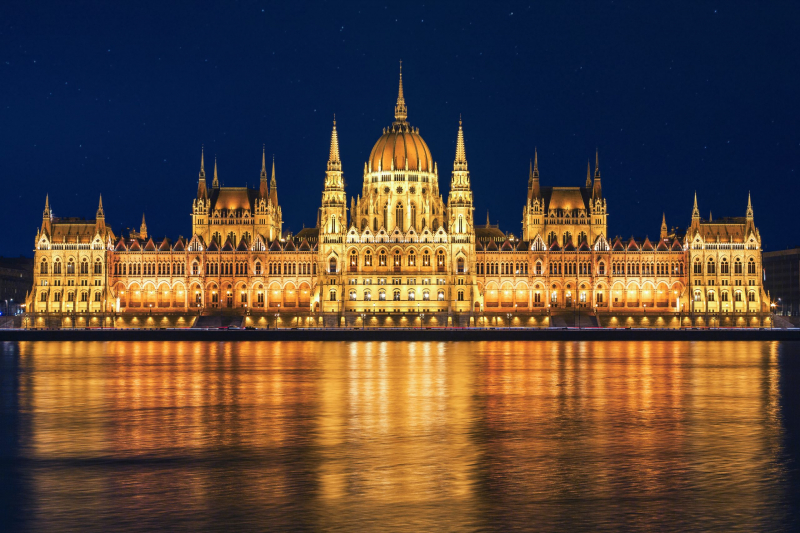
dynamictours.hu 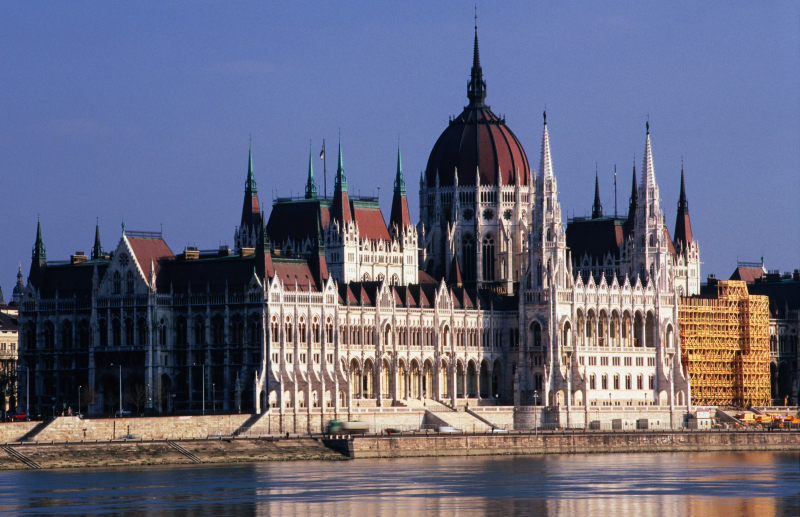
Lonely Planet -
Abu Dhabi, the capital of the United Arab Emirates, is home to the Sheikh Zayed Grand Mosque. The main site of worship for daily prayers is the largest mosque in the nation. In the city of Solo in Indonesia, a miniature duplicate of the big mosque is present. The building complex is roughly 290 by 420 feet and, when car parking and external landscaping are excluded, occupies a space larger than 12 hectares. The building's primary axis is positioned 12 degrees south of true west, pointing in the general direction of the Kaaba in Mecca, Saudi Arabia.
The offices of the Sheikh Zayed Grand Mosque Center (SZGMC) are in the west minarets. Through its educational cultural activities, tourist programs, and management of day-to-day operations, SZGMC acts as a hub for learning and exploration. The community is served by the library, which is housed in the northeast minaret, with classic books and publications covering a variety of Islamic topics, including sciences, culture, calligraphy, the arts, and coinage, as well as some rare publications. A variety of languages are represented in the collection, including Arabic, English, French, Italian, Spanish, German, and Korean. It has received two consecutive votes from TripAdvisor as the second most popular landmark in the world.
Location: Abu Dhabi, United Arab Emirates
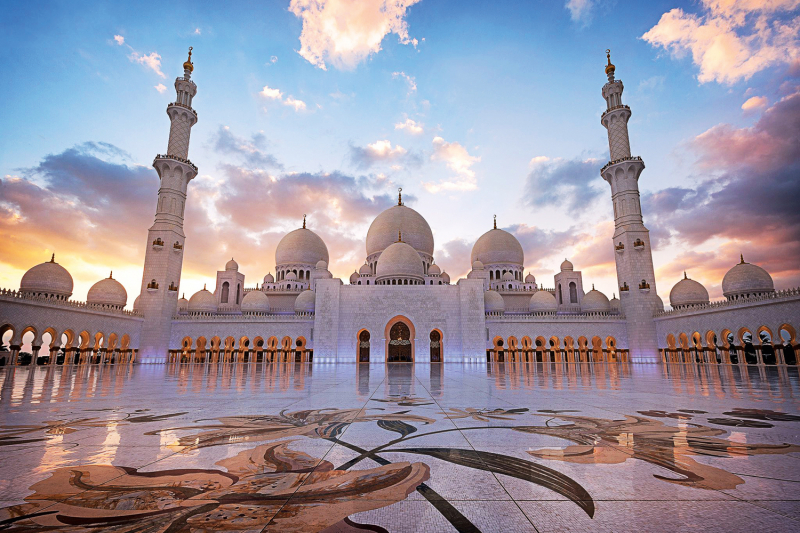
timeoutabudhabi.com 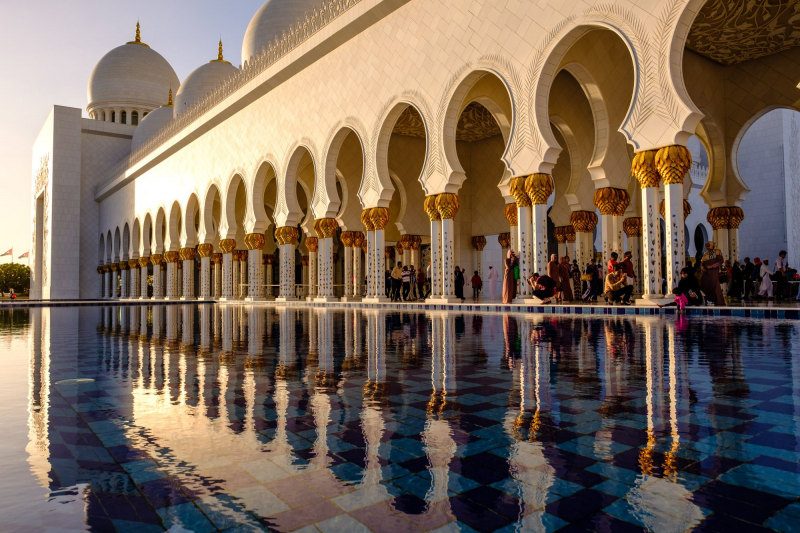
timeoutabudhabi.com


















